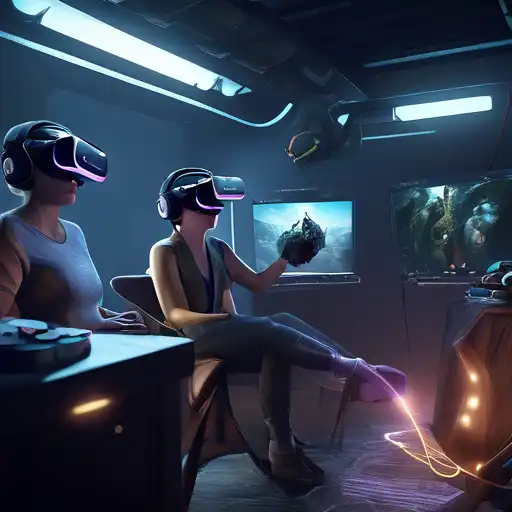Introduction to Virtual Reality
Virtual Reality (VR) has transformed the way we interact with digital content, offering immersive experiences that blur the line between the virtual and the real world. This guide will walk you through the essentials of creating captivating VR experiences that engage and amaze your audience.
Understanding the Basics of VR
Before diving into VR development, it's crucial to grasp the foundational concepts. VR is a simulated experience that can be similar to or completely different from the real world. It requires a headset and, in some cases, additional equipment like gloves or treadmills to enhance the immersive experience.
Choosing the Right Tools and Software
Selecting the appropriate tools is the first step in VR development. Popular platforms include Unity and Unreal Engine, both of which offer robust support for VR projects. Additionally, consider the hardware requirements of your target audience to ensure compatibility and performance.
Designing for Immersion
Immersion is the key to a successful VR experience. This involves creating a believable world with interactive elements that respond to the user's actions. Pay attention to detail, from the textures to the sound design, to make the virtual environment as realistic as possible.
Optimizing Performance
VR applications demand high performance to prevent motion sickness and ensure a smooth experience. Optimize your assets and code to maintain high frame rates. Testing on various devices is also essential to identify and fix performance bottlenecks.
Engaging the User
Engagement goes beyond visual fidelity. Incorporate storytelling, puzzles, or challenges to keep users interested. Remember, the goal is to make them forget they're in a virtual world.
Testing and Feedback
Before launching, gather feedback from a diverse group of testers. This will help you identify issues and areas for improvement that you might have overlooked.
Publishing Your VR Experience
Once your VR experience is polished, it's time to share it with the world. Platforms like SteamVR, Oculus Store, and Viveport are great places to publish your work. Don't forget to market your project to reach your target audience.
Conclusion
Creating immersive VR experiences is a challenging yet rewarding endeavor. By following this guide, you're well on your way to mastering the art of virtual reality. Remember, the key to success lies in attention to detail, performance optimization, and user engagement.
For more insights into VR development, check out our VR Development Tips article.
